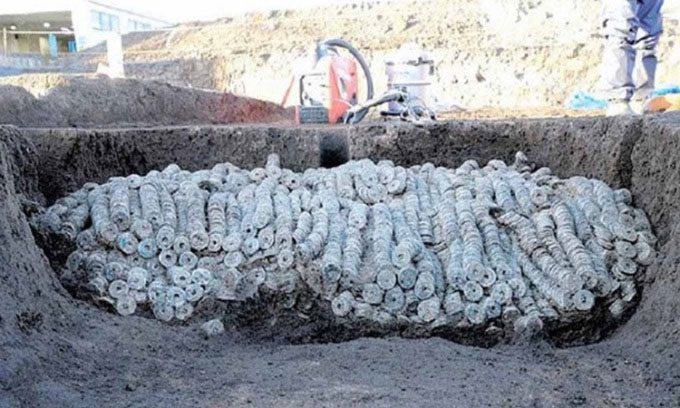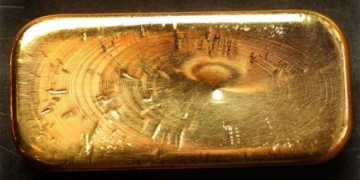A Massive Hoard of Coins Discovered in Maebashi City
This colossal treasure consists of 100,000 ancient coins unearthed during construction work in Maebashi, located in central Japan. Among the findings is a rare specimen of Ban Liang, the first standardized currency in Chinese history. Dating back over a thousand years, these coins were stringed into chains of approximately 100 coins each, bound together with straw and hidden away during times of war, as reported by Ancient Origins on November 13.

The coins in the treasure date back to various centuries. (Image: Ancient Origins).
The oldest coin in the hoard is a Ban Liang coin that originated in 175 BC, making it over 2,000 years old. This specimen has a diameter of 2.3 cm and a thickness of one millimeter, featuring a square hole of 7 millimeters in the center, engraved with the characters for Ban and Liang. The hoard was located in the Sojamachi district, near a medieval Japanese residential area, revealing the methods of wealth concealment often employed by the aristocracy during wartime.
Authorities in Maebashi discovered a piece of straw measuring 60 x 100 cm, indicating that the coins were wrapped in straw mats before being buried. From the 334 coins examined, researchers confirmed at least 44 different types, dating from 175 BC to 1265 AD. Most of these coins originated from the Western Han to the Southern Song dynasties. The Ban Liang coins were initially issued by Emperor Qin Shi Huang around 210 BC and were in use until they were replaced by the Wu Zhu coins in 118 BC. The most recent coin, produced in 1265, suggests that this treasure was buried during the period from 1185 to 1333.
Spanning one kilometer, the excavation site could have been the center of the Kozuke province during the Kofun period, from the late 3rd century to the 7th century, which later became part of Gunma prefecture and a hub for trade activities.




















































